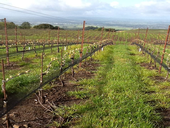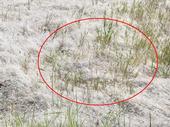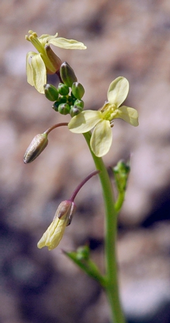- Author: Richard Smith
- Posted by: Gale Perez

In vegetable production, growers cultivate most of the bed leaving only a 4-inch wide uncultivated band around the seedline. Weeds not controlled by preemergent herbicides or cultural practices in the uncultivated band are ultimately controlled by hand. Labor costs have increased and availability has decreased in the last 4 – 5 years which has spurred grower interest in automated weeder technology. In the last two to three years, automated weeders have become available in the Salinas Valley. All current machines were developed and manufactured in Europe: the Robovator developed in Denmark by Poulsen Engineering and distributed by Pacific Ag Rentals (Salinas); the Steketee IC developed in the Netherlands and distributed by Sutton...
- Posted by: Gale Perez

From Brian German at AgNet West :: April 17, 2018
California rice growers will need to be on the lookout for two new problematic weed species this year. One of the species is called rough barnyardgrass (Echinochloa muricata) and the other is known as coast cockspur grass (Echinochloa walteri). The discovery of the weeds came after two growers having difficulty controlling weeds reached out to University of California researchers for assistance with identification.
“I took it to the Herbarium and they confirmed that both of the samples I took down there were Echinochloa muricata, which is related to the...
- Author: Marie Jasieniuk
- Posted by: Gale Perez

The evolution of herbicide resistance in weeds is an ongoing problem in California agriculture. Resistance to glyphosate has become particularly widespread across the state. Normally, glyphosate kills weedy plants by inhibiting 5-enolpyruvylshikimate-3-phosphate synthase (EPSPS), an enzyme that is necessary for the production of some important amino acids in plants. However, repeated applications of glyphosate can result in the selection of rare mutant plants that have a unique ability (mechanism) to “resist” death by glyphosate. The mutant plants survive glyphosate application and produce seeds, which give rise to more resistant plants the following year. Over time, repeated glyphosate applications will result in a field,...
- Author: Thomas Getts

Last year about this time, I posted a blog regarding an ongoing trial investigating various herbicides for Pre-emergent Control of Medusahead. I wanted to follow up on that trial which I “deemed” unsuccessful and share some of the data collected in 2017.
The main objective of the study was to test various herbicides for medusahead control. I was interested if some of the work conducted at Colorado State with Esplanade (indaziflam) could be replicated with medusahead. In Colorado field trials, single applications of Esplanade had offered three-year...
- Author: Devii R. Rao
- Posted by: Gale Perez

Saharan mustard is originally from the Mediterranean. It was introduced to California where it became a weed, particularly in the dryer parts of the state. Livestock can be poisoned by Saharan mustard if they are kept in fields that have little else to eat but Saharan mustard. Signs of toxicity include “colic, diarrhea, excessive salivation, and thyroid enlargement” (DiTomaso, J.M., G.B. Kyser et al. 2013). Saharan mustard can also increase fire hazard.
Saharan mustard has been documented in eastern San Benito County on Panoche Road; in western Fresno County; in Monterey County at Fort Hunter Liggett; and in San Luis Obispo County it is concentrated near Morrow Bay and north of Santa Maria, but has been...


